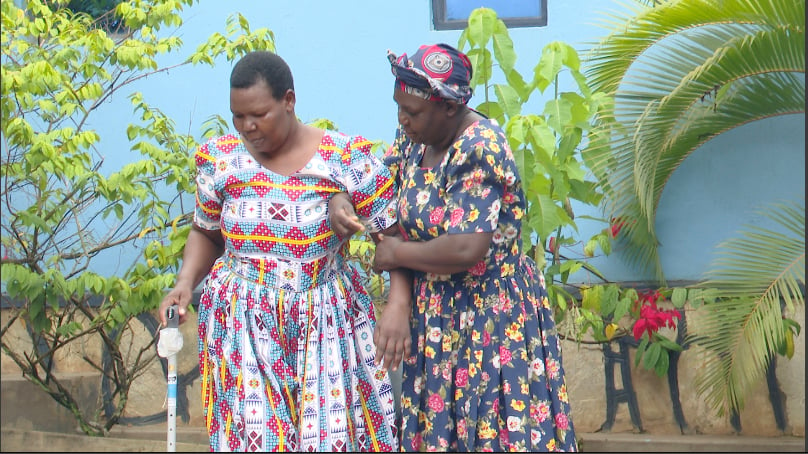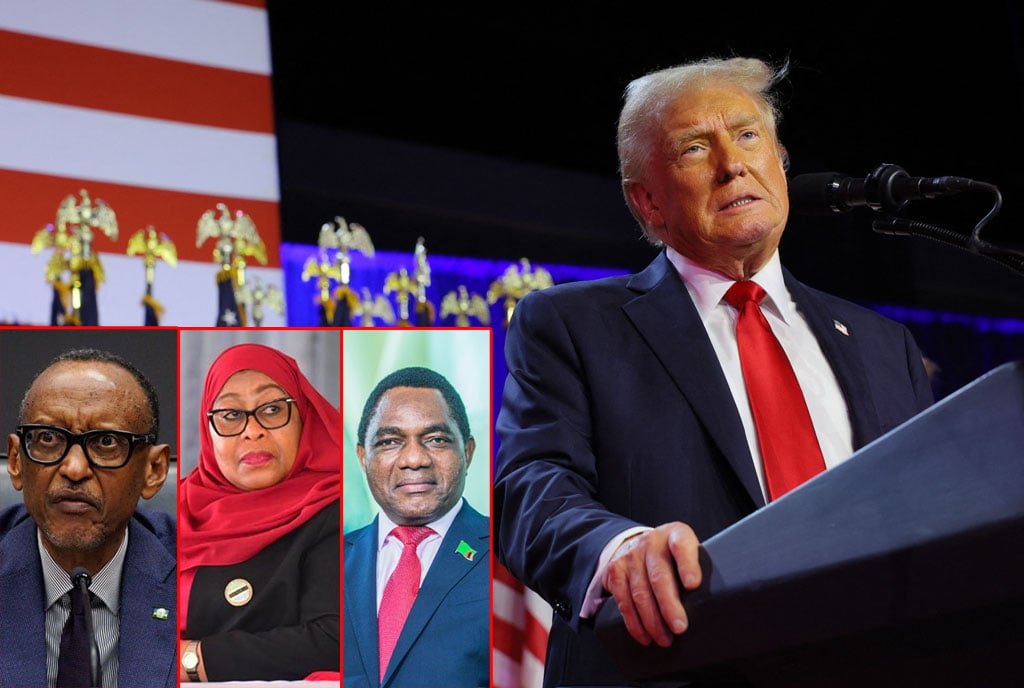Prime
Locals join hands to save River Mpanga
What you need to know:
- In danger. The construction of a hydropower station and beehive of human activities on the river banks have degraded River Mpanga, which conservationists say faces extinction if nothing is done, writes Paul Tajuba & Alex Ashaba
A few metres before River Mpanga joins Lake George, there is a tale of two worlds; one covered by a stunning beauty of forest canopy and rare cycad plants and the other, bare brown soils, come alive.
On the river’s highest falls, about 40 metres high, lies the 18 megawatts Mpanga Small Hydropower Station, whose capacity to generate power is dependent on the water in the river that flows from the Rwenzori Mountains through the districts of Kabarole, Kyenjojo and Kamwenge, before it feeds into Lake George.
It is this protected dam area, metres outside Queen Elizabeth National park, where you find the forest canopy and what is believed to be the world’s largest colony of rare young and old cycads.
Cycads are a source of food for baboons, monkeys, and fruit bats, common creatures in the said park. They do not grow anywhere, take several years to mature and bear fruits and can live hundreds of years as opposed to other tree species.
That explains their location and protection attached to them.
But outside the protected areas, large sections of privately owned land around the river has been converted into farmlands and when it rains, water carries soils down into the river.
While the law forbids cultivation within 30 metres of the rivers and 200 metres from the lakes, this has been disregarded by cultivators, who have since dug up to the banks of the river.
“The effect on our part has been increased costs of regular removing of the soils from our systems because the system needs clean water,” says Mr Abe Serubula, the African Energy management systems (Afems) Mpanga engineering manager.
“We have planted more than 3000 cycads and protected those we found here (before the project started in 2008) because the more we have them, the more the river will be protected from soil erosion which increases our operational costs,” he adds.
The 18 megawatts power generated at the river, is consumed by more than 20,000 people in Kamwenge and neighbouring districts, but it is also added on the national grid.
The river is a source of water for domestic consumption and for small factories. It is drowned and supplied by the National Water Sewerage Cooperation (NSWC) residents in towns.
Supply of water and electricity has considerably improved the living standards of the people here, but by threatening the operations of both the NWSC and the power generation plant, the locals are doing what is akin to biting the hands that feed them.
“We are generating nine megawatts because of the reduced water volumes,” Mr Serubula said, hoping that during this rainy season, the river will get more water and make the Shs57bn plant generate the installed capacity.
Mr Francis Hategyeka, the Kanara Sub-county chairman in Kamwenge District where the power dam is located, says degradation of the environment, especially the cutting down of cycads and trees to make charcoal and plant crops, has of recent overwhelmed the local leadership.
“This area was formerly occupied by pastoralists but they have since moved to other regions of the country. Instead, they have leased out their land to cultivators who have cut and burnt cycads and other trees to grow crops,” Mr Hategyeka said.
Mr Peter Kityo, the Electricity Regulatory Authority (ERA) environment specialist said they have done regular inspections and monitoring of the power firm to their satisfaction of environment protection especially in regard to the endangered cycad but there is a lot the community needs to do.
“We are concerned as a regulator if the community destroys the catchment, then all the benefits of this river will be in danger,” Mr Kityo said.
The hydropower project came under fire from conservationists when they cut down some cycads to pave way for the construction of the access roads to the plant.
“At the start, we did not know the importance of cycads,” Mr Charles Mugisha, the manager projects African Energy management systems (Afems) Mpanga said.
“We later hired a consultant and planted more than what we had cut,” he adds.
Mr Denis Muramuzi, the Fort Portal NWSC area manager, says it is increasingly becoming expensive for them to filter the polluted water from River Mpanga as they require more chemicals to make the water safe for human consumption.
“Between 2010 and 2016, the chemical consumption at NWSC Fort Portal plant increased by 3.1 times, from 0.0120 units of water to 0.0375 units of water treated,” Mr Muramuzi says.
“And it is all due to the increasing pollution levels on the river, which serves as our source of raw water supplying Fort Portal and Kabarole District,” he adds.
Mr Tom Bwijana, an elder who has resided in Fort Portal town for decades, looks on in disbelief as he compares beauty past and the ugliness of the present flow of River Mpanga.
“In the olden days, River Mpanga had much water and it could give beauty to our town. Unfortunately, it is now a narrow stream where all its tributaries such as River Mugunu and Itara have now reduced their amount of water flow” he says.
Draining water from river
Mr Bwijana says in the colonial days: “people used to abide by the bylaws and no one would cut or plant trees such as eucalyptus that drain the water around the river.”
There are a lot of human activities on River Mpanga banks such as agriculture, stone quarrying, car washing and brick making among others.
Residents near the river also use water for their animals while others use it to irrigate their crops during the dry season.
In the villages of Kyabikokoni, Mugoma, Rukogora all in West Division of Fort Portal Town in Kabarole District, there are many gardens that have been established and animal farms on the river banks.
In Fort Portal Town alone, there are car washing bays established along the river banks and brick making at Ahakabale on Fort Portal-Kyejonjo road.
In Karagura Hill in Kabarole District, there are ongoing stone quarrying activities and stones are dumped in the river causing further siltation.
Mr John Bagonza from Rukogora Village in West Division said River Mpanga used to be covered with thick vegetation and the river banks were not encroached with human activities.
“This river was ever full of water but now as you can see, the volumes have reduced because of human activities, which need intervention from concerned authorities,” Mr John Bagonza said.
In August 2017, the Fort Portal Municipal Council resolved to stop all activities but seven months later, nothing has changed.
Earlier in 2016, the same Council had launched a campaign dabbed, “Keep Fort Portal Town Clean” to acquire tourism city status. The campaign entailed mobilising residents to pick up all sorts of tools available to them and clean up the town and cut all the bushes around the river on every fast Monday of the month.
The Council has also established a team of seven gags to clean the river on contract basis. Each gag is paid a monthly token of Shs600,000 for their services.
Fort Portal mayor Willy Kintu Muhanga is so far impressed with what has been achieved.
“We have demolished all illegal structures on River Mpanga banks at Mpanga market and what is left is to embark on cleaning the river to ensure that all dumped materials are removed. Our enforcement team has ready issued notices to people who are encroaching on the river,” Mr Muhanga says.
He said the Council has set up a committee comprised of, among others, the district police commander (DPC), the resident district commissioner (RDC) and a select team of Councillors to constantly monitor activities as a way of guarding against the sprouting up of other illegal structures.
Kabarole District has also formed a parallel initiative aimed at ensuring that the river is not encroached on.
Non-governmental organisations (NGOs) have joined in what is fast turning out to be a collective effort to save this multipurpose river.
Future plans
According to the coordinator of Natural Resources Defence Initiatives (NRDI), Mr Edgar Muganzi, they have developed a five-year working plan that involves replacing of eucalyptus trees with more appropriate trees such as Grevillia robusta.
“We are replacing eucalyptus trees with indigenous trees, sensitising communities to stop encroaching on the river banks to stabilise River Mpanga. This is because the river is becoming thinner and losing its water colour as a result of pollution,” he says.
Mr Bob Nuwagira, the information and communications officer at National Environment Management Authority says they have given the encroachers on River Mpanga 21 days to leave.
Mr Nuwagira says the river is of a kind that no one would accept it to disappear owing to its importance.
Already, he said, at 30 hectares of river catchment where locals had planted eucalyptus trees have been cut by owners voluntarily after the Authority sensitised them about the laws they were violating.
“What we are going to do next is to demarcate the banks of the river,” Mr Nuwagira said.
For once, the leadership, civil society and residents are pulling in the same direction in the race to save River Mpanga.
It remains to be seen whether the initiatives will pay off.




